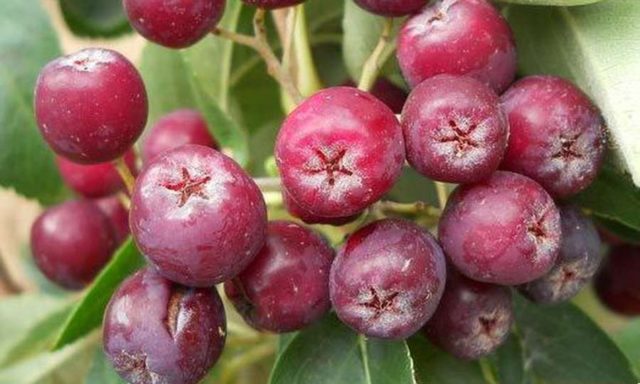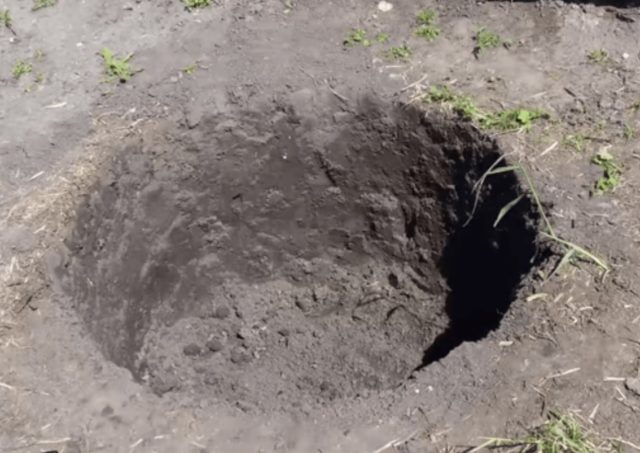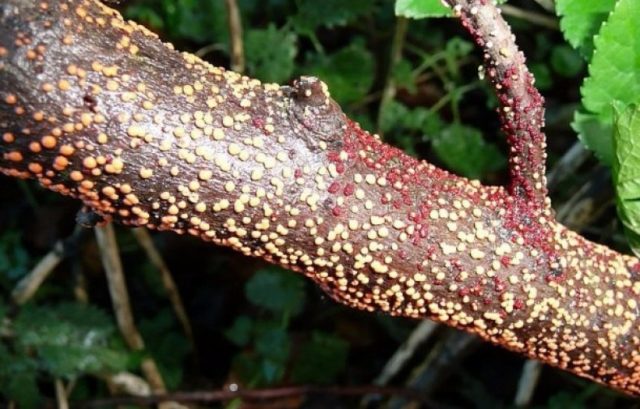Content
Rowan Rubinovaya - Michurinsky variety, which was lost, but then found and multiplied. This species has a slight astringency in taste, inherent in all old Michurin varieties.
Description of Rubinova's mountain ash
Rowan Rubinovaya is a tree of medium height, not exceeding 3 m. The crown is drooping.
The foliage is colored light green. The edges of the leaves are finely serrate, the petioles are pubescent. The bark on the branches is light brown.
According to the description, the flowers of Rubinova's mountain ash (pictured) are small, pinkish-white. Inflorescences are corymbose, bloom in late May or early June.
The fruits that appear on the tree are round-flattened. The weight of each berry does not exceed 1.3 g. The peel on the fruit is ruby in color, and the flesh is yellow.
The taste of the berries is sour-sweet, with a slight astringency. They are used to make juices, jellies, and alcoholic beverages. For long-term storage, the berries are dried. The fruits ripen at the end of September. The tree bears fruit annually, gives a bountiful harvest.
The culture is resistant to winter frost.
Pros and cons of Ruby rowan varieties
Rowan Rubinovaya has not only advantages, but also disadvantages. Among the advantages are the following:
- decorative look. Rowan differs from other varieties in its beautiful fruit color;
- medium resistance to frost, which allows growing crops in regions with cold winters;
- pleasant fruit taste. This variety is obtained as a result of cross-pollination of rowan and pear, so the berries have a dessert taste.
Among the shortcomings, experts note the presence of bitterness in berries, as well as the impossibility of growing crops in wetlands.
Planting and caring for Rubinova's mountain ash
Rowan can be planted in spring or fall. The timing of autumn planting depends on the climatic region:
- in the central regions of Russia, planting is carried out from mid-September to the first decade of October;
- in the south, planting is postponed until October - November;
- in northern latitudes they are planted a little earlier - at the beginning of September.
If the autumn planting was missed, the seedling is stored until spring. There are several ways to save planting material:
- in the basement. To do this, the roots are placed in a container with a moist substrate: peat, sawdust, sand. The room temperature should be from +1 to +8 ° C, humidity 80-90%. It is necessary to ensure that the substrate does not dry out, for this it is periodically moistened (once a week);
- the method of dropping is as follows: a deep hole is prepared on the site and the seedling is placed at an angle of 45 °. A moistened mixture consisting of equal parts of peat and sand is poured into the pit;
- when snowing, the seedling is wrapped in a damp cloth and buried in the snow. It is necessary to control the level of snow over the seedling.
Landing site preparation
Before planting a seedling, a planting site must be prepared. It is dug to a depth of 20-30 cm, all weeds are removed, fertilizers are applied.
Landing rules
The height of the rowan of this variety is approximately 3 m, this should be taken into account when choosing a place for planting. Rowan trees can shade other seedlings, so it is better to plant them at the border of the site. If you plan to plant several specimens, a distance of at least 4-5 m is maintained between them, the same gap should be from other trees.
Average sizes of a landing hole:
- diameter from 0.6 to 0.8 m;
- depth from 0.5 to 0.7 m.
These figures are indicative; in each case, the size of the root system, as well as the condition of the soil, should be taken into account.
For planting, you will need to prepare a nutritious soil mixture:
- 1 bucket of sod land;
- 5 kg of peat or compost;
- 150 g superphosphate;
- 2 kg of rotted manure;
- 1 glass of wood ash.
The components are thoroughly mixed. The planting hole is covered with 1/3 of the prepared mixture, then a little ordinary earth is added, the seedling is set vertically, the roots are spread over a poured mound of earth and sprinkled with nutritious soil on top. 10 liters of water are poured into the planting pit.
Watering and feeding
If the seedling is planted in the spring, it is watered regularly, this will help the roots to recover and the tree will grow. For autumn planting, watered before the onset of frost. Watering is carried out only if there is a dry autumn without precipitation. If it rains regularly, no additional watering is required.
Mature trees are watered as needed. During the season, 2-3 waterings are enough: at the beginning of the growing season, 20 days before harvest and 2-3 weeks after harvest.
Watered in grooves dug around the trunks. An adult Rubin's mountain ash will require 20-30 liters. Water consumption is approximate. The amount of water is determined by the condition of the soil and the age of the trees.
To increase the yield of Rubinova's mountain ash, you need to take care of making additional fertilizing.
In the spring, 5-6 kg of compost or humus are laid under the tree, as well as 50 g of ammonium nitrate.
In June, mullein (1: 5) or bird droppings (1:10) are bred and a bucket of diluted mixture is poured under the mountain ash.
After fruiting, wood ash (0.5 l) and superphosphate (100 g) are added to the root circle.
Pruning
Rowan needs pruning not only for crown formation. A sanitary procedure will prevent the development of diseases.
If the weather does not foresee strong frosts, Rubin's mountain ash can be cut off at the end of winter. During this period, adult (3-5 year old) trees are pruned, and it is better to postpone pruning of young seedlings until the end of March. It is best to prune old trees in the summer to reduce the risk of infection.
After planting, seedlings are recommended to thin out, since young branches grow rapidly and lead to thickening of the crown. The shoots stretch upward and become very thin, fragile, which further leads to problems in the formation of the crown.
When carrying out the first pruning, you must select the main trunk - this will be the thickest and highest shoot in the center of the seedling. It should be vertical and dominant over the rest of the branches. It is not cut in the first year after planting. The remaining lateral shoots are shortened, leaving no more than three buds. All shoots that are located at a distance lower than 40 cm from the ground must be removed.
Young Ruby Rowan is pruned moderately. The main task is to form the crown and prevent it from thickening. To do this, delete:
- old branches;
- shoots located towards the ground;
- branches competing with the center conductor;
- broken, damaged and diseased shoots.
Mature trees need anti-aging pruning. To do this, once every two years, several old side branches are removed. This stimulates the growth of new shoots and improves fruiting.
Preparing for winter
So that young rowan seedlings do not freeze in winter, they need shelter. Preparation for winter is as follows:
- the trunk is wrapped in burlap, then covered with spruce branches;
- in winter, the trunk circle is covered with snow and tamped down. It is necessary to periodically add snow so that the lower part of the trunk is not exposed;
- whitewashing trees avoids sunburn;
- to protect against rodents, pesticides are laid out on the site.
Pollination
Rowan requires cross-pollination, therefore, to increase the yield, it is necessary to plant different varieties that bloom at the same time. You can use grafting cuttings on one tree. This method allows you to save space and get a crop of different varieties.
Harvesting
Rowan Rubinovaya is a medium-ripening variety. Fruiting occurs 3-4 years after planting. The annual harvest is consistently high.
Diseases and pests
The following pests are parasitic on mountain ash:
- weevils, moths. To combat them, treatment with Karbofos is necessary;
- bark beetles. You can eliminate them with Confidor;
- gall mites. Colloidal sulfur will help get rid of the invasion;
- apple aphid. Actellic or Decis is required;
- mountain ash moth. Chlorophos will help eliminate the insect.
Rowan diseases can be as follows:
- spotting (brown and gray);
- anthracnose;
- rust;
- moniliosis;
- scab;
- necrosis;
- ring mosaic.
Weak seedlings are susceptible to diseases. Buying a healthy plant and taking proper care of it is a guarantee that there are no diseases.
Reproduction
Reproduction is possible in a generative or vegetative way. Planting with seeds does not guarantee a seedling that meets all the qualities of the mother plant.
Vegetative cultivation methods of Rubinova's mountain ash:
- by cuttings. In this case, green or lignified cuttings can be used;
- vaccination. For the stock, varieties of rowan Nevezhinskaya, Moravskaya or ordinary are suitable.
Conclusion
Rowan Rubinovaya is an ornamental variety used in landscape design. The fruits of this variety have an unusual color and a pleasant sour taste, therefore they can be used for the preparation of infusions, fruit drinks, juice, jam.
Reviews about Rowan Rubinova












